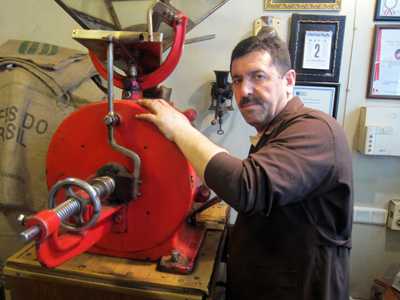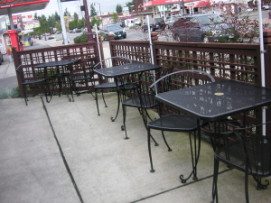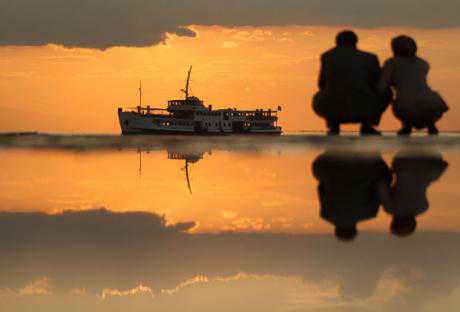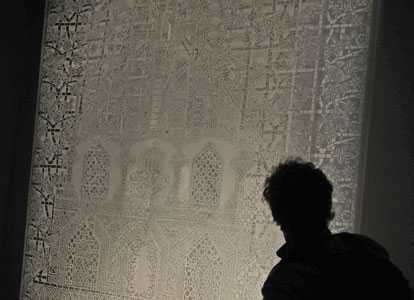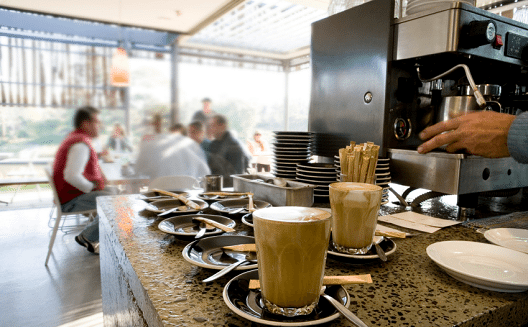
Since their inception in Istanbul in the 16th century, coffeehouses have been centers of free-wheeling and off-hand discussions, venues where unlikely migrations between different clusters take place and the starting point of many great ideas.
In Europe, coffeehouses were the hub of scientific and artistic conversations. The salon-like atmosphere allowed people from all kinds of backgrounds to connect, mingle, and share. Diverse disciplines intertwined, married, and gave birth to innovative ideas in an environment that was optimistic and politically engaged. In other words, coffee shops were far from being places for pure leisure or a hangout for lost souls who had little to do.
In 20th century Vienna, Berta Zuckerkandl, an influential salonnière, hosted artists, scientists, writers, and thinkers in her living room. The spirit of her salon was based on the free exchange of scientific and artistic ideas. This allowed artists to create paintings inspired by, say, the structure of a living cell. This is because innovation “is not so much a question of thinking outside the box, as it is allowing the mind to move through multiple boxes. That movement from box to box forces the mind to approach intellectual roadblocks from new angles”, says Stephen Johnson.
Now we know why Pixar’s studio building, much like traditional coffeehouses, is “structured to maximize inadvertent encounters” and force interactions between different departments. Yet, employees are still encouraged to personalize their individual office spaces. The same is true for Microsoft’s building 99 where office walls – most of which are wipe-on/wipe-off – can easily be reconfigured to match the needs of the employees.
While social interaction and collaboration are important for creative problem-solving, so is quiet, personal time. Quiet time is not only essential to brain development, but it is also the optimal environment for learning new skills. Distractions often prevent talent development, and a lot of social noise can be harmful to growth.
Many creative gurus actually oppose the groupthink culture. In his memoir, Apple cofounder Steve Wozniak writes: “Most inventors and engineers I’ve met are like me – they’re shy and live in their heads. [The] very best of them are artists. And artists work best alone.”
He later writes: “I’m going to give you some advice that might be hard to take. That advice is: work alone. You’re going to be best able to design revolutionary products and features if you’re working on your own. Not on a committee. Not on a team.”
At the same time, let us not forget that as Wozniak was developing the Apple I, he incorporated feedback from members of the Homebrew Computer Club – an engineering club and group of people with shared interests. “They’d tell him about upcoming microprocessors and help troubleshoot his circuit board. They’d give him advice on working with floppy-disk drives and offer suggestions on negotiating with suppliers.” (Lehrer, Imagine: How Creativity Works)
The reason why Silicon Valley was home to dozens of success stories like Intel, Apple Computer, Cisco, Oracle, Sun Microsystems and later Netscape, Google, Netflix, and Facebook, and other places weren’t, is primarily due to the free flow of information and knowledge spillover that took place in computer clubs, restaurants, bars, and other coffeehouse-like locales.
I recently learned that, in the past, the annual pilgrimage to Mecca (hajj) was never just a chance to perform religious duties, but a meeting point for scholars and thinkers from different parts of the world to discuss the latest developments in their fields; the House of Wisdom was never the only source of innovation that sparked the Islamic Golden Age.
Today, many coffeehouses in Europe and North America are still “hotbeds” of intellectual flowerings and provide an optimal platform for both lively group conversations and quiet reflections. Aside from inviting local artists to perform, a lot of coffeehouses possess interesting assortments of books and CDs on their walls, thus inviting dwellers to embark on serendipitously creative journeys.
Furthermore, the architecture and design of the space – lighting, relative absence of televisions, and the cosy, relaxed setting – form the perfect ambience for concentration (many cafés even have silent study areas).
This age-of-enlightenment feel is lacking in most Arabic cafés where the free exchange culture is muffled by loud pop music and glaring televisions. Indeed, such uninspiring, hookah-saturated spaces strangle creativity and do not welcome “knowledge-thirsty listeners” as they once did. What is true of many western coffee shops is not true of enough Arabic cafés, and if we want to see an age of innovation in the Arab world, then coffeehouses are a good place to start.
So let’s start. What can we do to transform a social hangout that molds idle youth into a catalyzer of creative ideation and innovative projects?
1) Design a thoughtful place for intellectual mingling. The first and most important step is to create an ergonomic, intellectually-friendly atmosphere that can help ideas flow, develop and mature. You want to make it easy for people to discuss for prolonged periods of time, and take advantage of unexpected meetings. You may need the help of an architect and a psychologist – because psychologists understand how different visual cues condition our thinking.
2) Forget TVs, decorate with local artwork. Provide visual artists, musicians, and poets with an opportunity to showcase their talents. Your clientele will be delighted and inspired by the healthy jolt.
3) Accumulate a library and encourage intellectual journeys. “London cafés were the first to provide newspapers to their clients, a move which attracted intellectuals and students willing to gather and discuss current affairs and trends affecting society.” Reading remains the supreme vehicle for the transmission of thought-provoking ideas and perspectives, so make sure you curate a diverse collection of interesting books and magazines.
4) Invite thinkers, university professors, students, and hobbyists. Host meetings, open discussions, give workshops, allow people to study and work on their projects at your coffeehouse. This will increase the probability of intellectual spillover and open access to the academically possible for even those who are not in the group. Send warm, original invitations to a select group of people, “Tonight, come and study at our coffee shop. Hot chocolates and desserts on us.”
5) Reward creative undertakings and ideas that sprout from your coffeehouse. Organize and host week-long competitions where you ask participants to find practical solutions to a specific problem your local community is facing. (You can impose constraints, or provide participants with a toolkit). By the end of the week ask everyone to present their solutions at the café in front of a panel of experts, and make sure the winning solution gets implemented.
6) Drop the hookah, keep the air fresh. It’s cleaner, healthier, safer, and it’ll make you stand out. This will say a lot about the culture you’re trying to promote.
These are just a few simple ideas that could transform Arabic cafés into stimulating and engaging environments that encourage creativity and growth. Re-thinking the purpose and design of coffeehouses – and other such settings – is an overlooked but critical part of development in the Arab world.
Although this article is about coffeehouses, all of the ideas mentioned here are applicable to corporate cafeterias, lounges, recreational areas, etc. – imagine the potential!
What do you think? Do you have any ideas on how to make coffeehouses hubs for creative ideation?
—
Oubai is a graduate student in Mechanical Engineering at McGill University. He is interested in crowd-driven innovation and multidisciplinary collaborations. His main passion is human-design interaction and the role design plays in shaping society and culture. Oubai is also the cofounder of the Arab Development Initiative. You can reach him on Twitter @obeikurdy.

